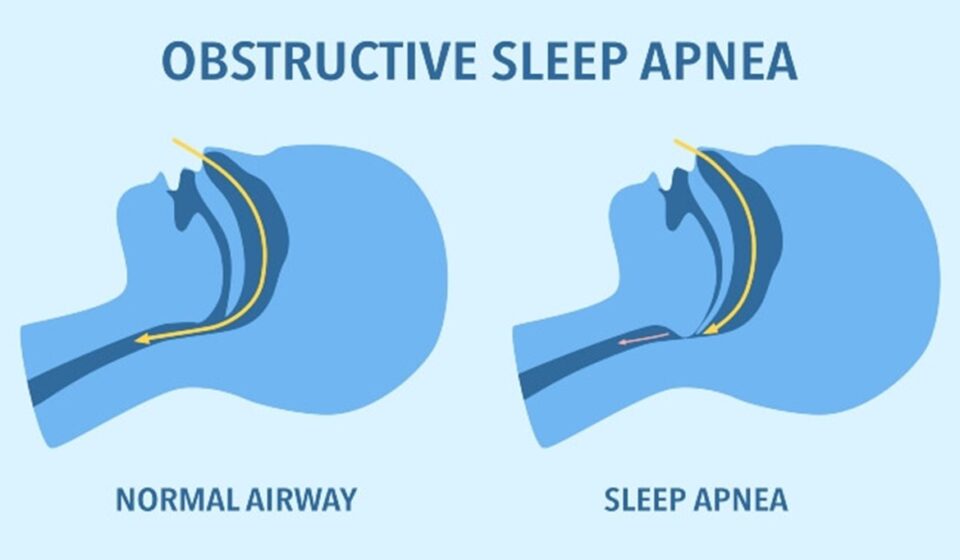Sleep Apnea
Manage Your Sleep Apnea Symptoms in AZ
Sleep apnea is a prevalent condition that affects millions worldwide, yet it’s often undiagnosed and untreated. At S&L Dental, we’re dedicated to educating our patients in Scottsdale and Paradise Valley, AZ, about sleep apnea symptoms and the implications this condition has on your oral and overall health. Understanding what is sleep apnea is the first step towards a healthy, good night’s rest. In this guide, we’ll explore what sleep apnea is, its symptoms, its causes, and how your dentist can be an unexpected ally in managing this sleep disorder.
What Is Sleep Apnea?
Sleep apnea is a serious sleep disorder where breathing repeatedly stops and starts during sleep. These pauses in breathing or shallow breaths can last from a few seconds to minutes and can occur multiple times per hour. This can lead to a host of health issues, ranging from fatigue and headaches to more severe conditions such as heart problems. It occurs when the muscles at the back of the throat fail to keep the airway open despite efforts to breathe. There are three main types of sleep apnea:

- Obstructive Sleep Apnea (OSA) – This is the most common type of sleep apnea. It occurs when the muscles in the throat relax excessively during sleep, causing the airway to become blocked or narrowed. As a result, breathing pauses or becomes shallow, leading to disruptions in sleep patterns.
- Central Sleep Apnea (CSA) – In this type of sleep apnea, the brain fails to send the appropriate signals to the muscles that control breathing. As a result, there is a lack of effort to breathe, leading to breathing pauses.
- Complex Sleep Apnea Syndrome (CompSA) – Also known as treatment-emergent central sleep apnea, this type occurs when someone has both obstructive sleep apnea and central sleep apnea.
How Common Is Sleep Apnea?
Sleep apnea is relatively common, although it often goes undiagnosed. Estimates of its prevalence vary depending on the population studied and the criteria used for diagnosis. However, it is generally recognized that sleep apnea is a significant health concern worldwide. Obstructive sleep apnea is the most common type of sleep apnea and affects about 3-7% of men and 2-5% of women. Although, up to 80% of moderate to severe sleep apnea cases remain undiagnosed. Lack of awareness and symptoms being attributed to other conditions often contribute to underdiagnosis.
Sleep Apnea Symptoms and Causes
As noted above, the symptoms of sleep apnea are often subtle, with many people being unaware of their condition. However, identifying sleep apnea symptoms is crucial for early detection and treatment. Look out for common symptoms of sleep apnea, including loud snoring, gasping for air during sleep, morning headaches, excessive daytime sleepiness, difficulty concentrating, and irritability. If left untreated, sleep apnea can lead to serious health problems such as high blood pressure, heart disease, stroke, diabetes, and an increased risk of accidents due to daytime sleepiness.
There is no one cause for sleep apnea. Reasons range from physiological traits like large tonsils or a narrow airway to lifestyle factors such as obesity and smoking. Genetics and family history can also play a role.
Can Sleep Apnea Be Cured?

In most cases, sleep apnea cannot be cured, but it can be effectively managed, and its symptoms significantly reduced. Treatment options for sleep apnea vary depending on the type and severity of the condition. For mild cases of OSA, lifestyle changes such as weight loss and exercise can significantly improve symptoms. More severe cases may require the use of CPAP machines, which keep the airway open by delivering a constant stream of air through a mask. CSA often necessitates the use of adaptive servo-ventilation devices. Surgery is also an option for those who don’t respond well to other interventions. Living with sleep apnea can be challenging, but there are ways to cope and manage symptoms. Some helpful tips include:
- Establishing a regular sleep schedule
- Sleeping on your side instead of your back
- Elevating the head of the bed
- Using a humidifier to keep airways moist
- Avoiding sedatives and alcohol before bedtime
How Can Dentists Help Sleep Apnea?
Surprisingly, your dentist can be a vital player in diagnosing and managing sleep apnea. S&L Dental can provide specialized oral appliances that adjust the position of the jaw and tongue during sleep, which can improve airflow and reduce the severity of sleep apnea symptoms.
Mandibular repositioning devices and tongue-retaining mouthpieces are among such appliances, which not only alleviate the disorder but also reduce snoring. Regular check-ups with a dentist familiar with sleep disorders can ensure your appliance is working effectively and fits comfortably.
Living With Sleep Apnea
At S&L Dental, we’re committed to supporting our patients with their sleep apnea symptoms in Scottsdale and Paradise Valley, AZ. Together, we can help you achieve restful sleep that leads to happier, healthier days. Our team is dedicated to providing personalized care and treatment plans for each patient’s unique needs. If you believe you may be exhibiting signs of sleep apnea or wish to discuss treatment options, we’re here to help. Contact us today for a consultation and take the first step towards a better night’s sleep.
Contact Us
We Welcome Patients of All Ages for Premium Dental Care!
